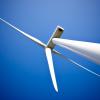
A powerful new IIASA model is set to reveal the profound links between energy and inequality, and how to steer the energy transition towards a fairer future.
Energy is at the heart of a sustainable future. It is central to the climate and pollution crises, as well as to development and equality. According to a 2021 UN policy brief titled, Leveraging energy action for advancing the Sustainable Development Goals (SDGs): “Decisive action on sustainable energy can catalyze progress towards all the other SDGs, as well as global climate protection targets.”
IIASA researchers are beginning to explore these connected issues using a new modeling framework.
“We are planning to probe the deep economic mechanisms that link the energy transition with energy access and inequality,” says IIASA Economic Frontiers Program Director, Michael Kuhn.
As an author of the UN document, Kuhn looked in particular at the links between energy and reducing inequalities. As the brief points out, the wealthy use a large share of global energy, which limits access to energy services for poorer consumers. Meanwhile, the poor are more exposed to pollution and climate hazards stemming from fossil fuels. Energy is also deeply entangled with other development issues. For example, lower levels of education in poorer communities can hinder their access to clean and safe energy.
“It’s important to understand that energy access is one component of deeper socioeconomic inequality,” Kuhn explains.
Governments have tried to broaden energy access through subsidies, but this seems to be a blunt instrument at best. Subsidies often support fossil fuel use, and help the rich more than the poor.
“If you give incentives to firms, where will they invest? Where there are rich consumers,” notes Kuhn.
Other policy options may make more sense, such as breaking up monopolies, and supporting local suppliers – for example through peer-to-peer electricity trading.
The team are now preparing to explore these ideas in a more rigorous way, with a new economic modeling framework co-developed at IIASA. This has more detail and flexibility than other models in its class (known as computable general equilibrium models). It can distinguish between birth cohorts and socioeconomic groups within each cohort, for example, to capture the different impacts of a subsidy or tax on workers versus retirees, or different income brackets. In addition, the model can trace out behavioral responses related to lifestyle.
“Say there is a choice between clean and dirty energy, then rich households will choose a different mix than poorer ones and may be affected differently by a carbon tax,” says Kuhn. “It also looks beyond narrow economic measures. GDP is only one variable. We are ultimately interested in social welfare impacts, taking into account things like life expectancy and health, which allows us to tie in a lot of the SDGs. Our model provides a basis for rigorous welfare assessments across multiple dimensions.”
The team will soon be using this model to test the effectiveness of different policies, and especially the links between energy access and inequality in general.
“Dealing with broad inequalities in opportunity may help you to resolve issues with energy access, or putting your policy lever under energy access may be a way to reduce broad inequality,” Kuhn adds.
The team plan to collaborate with colleagues across the institute, for example, exploring the dimension of justice with the Population and Just Societies Program, as well as links to climate and other ecosystem resources.
